Use of Tether has increased in Venezuela after the U.S. reimposed sanctions on oil exports.
Venezuela Looks to Tether to Bypass Sanctions: Reuters
Venezuela’s state-run oil company started experimenting with Tether in 2023.
Ethereum Fueled Up: Will 320 Million USDT Inflow Ignite Price Surge?
The winds of change are swirling around Ethereum (ETH), the world’s second-largest cryptocurrency. While the Ethereum network itself is buzzing with activity, the price of ETH has taken a tumble in recent days, leaving investors scratching their heads.
A glimmer of hope emerged with Tether’s (USDT) recent movement. Tether, the issuer of the world’s most popular stablecoin pegged to the US dollar, transferred a whopping $318 million worth of USDT from its treasury wallet directly to exchanges on the Ethereum network.
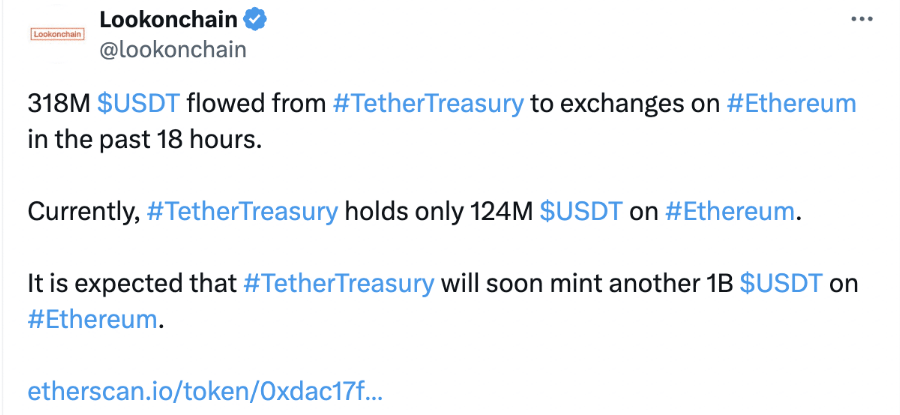
This outflow suggests potential anticipation of increased demand for USDT, which could, in turn, signal rising investor interest in the broader cryptocurrency market.
Historically, Tether has minted large amounts of USDT during periods of heightened crypto activity, and the rumor mill now churns with speculation that another billion USDT might soon be minted specifically on Ethereum.
However, analysts caution against blind optimism. While an increase in USDT activity could bode well for Ethereum, it’s not a guaranteed path to prosperity.
Other blockchains, like Tron, are also capable of handling USDT transactions, offering investors alternative avenues.
Price Woes And Investor Sentiment
Meanwhile, the price of ETH has stubbornly refused to cooperate. As of today, ETH is trading below the crucial $3,000 mark, having dropped by nearly 3% in the last 24 hours.
Ethereum has lost 11% of its value in the last seven days, data from Coingecko shows.
Related Reading: Toncoin Unleashes DeFi Monster Growth: TVL Soars 300% In A Month
A further price drop below $3,000 could trigger panic selling, exacerbating the downward spiral.
The current situation presents a complex picture for Ethereum. While Tether’s recent move and steady network activity offer slivers of optimism, the declining price and NFT market correction paint a contrasting picture.
A Hive Of Activity Despite Stress On Price
While the price of ETH might be feeling the heat, the Ethereum network itself is humming with activity. Unlike the recent slump in the NFT (Non-Fungible Token) market, overall network usage has remained remarkably consistent.
This suggests a shift in focus within the Ethereum ecosystem. While the flamboyant world of NFTs might be experiencing a temporary correction, other sectors within Ethereum are picking up the slack.
The rise in DeFi (Decentralized Finance) transactions, stablecoin swaps, and general token activity could be the hidden forces keeping the network busy.
Featured image from Pexels, chart from TradingView
Sen. Lummis: It’ll Pay to ‘Choose Circle Over Tether’ Under U.S. Stablecoin Proposal
Circle Internet Financial would have a distinct advantage over global stablecoin leader Tether under U.S. regulations along the lines being suggested by new legislation, according to one of the latest bill’s authors, Sen. Cynthia Lummis (R-Wyo.).
Bitcoin: Will This “Dry Powder” and Historical Trends Fuel A Price Boom?
While Bitcoin has dipped from its recent highs of around $74,000, some analysts are urging investors to stay calm and even see this as a buying opportunity. So far, Bitcoin prices have remained under pressure, trickling lower in the past trading week.
Are There Similarities With The Bitcoin Bull Run Of 2020?
Though the downward momentum is slowing down, and there has been no confirmation of the April 2 dump, the failure of bulls to convincingly flow back and drive the coin above $71,000 remains a concern for some traders.
Even so, taking a bullish stand, one analyst on X compares the current formation with that of 2020. Pointing to the cyclic nature of prices and the inevitability of retracements from bottoms and peaks, the trader expects prices to bounce.
The trader said that in 2020, when Bitcoin prices fell, shaking out weak hands, the recovery sparked a bull run that forcefully saw the coin surge above previous all-time highs of $20,000. The analyst seems to allude to the retracement before the breakout as a catapult that eventually fed the “legendary” bull run, which saw Bitcoin float to as high as $70,000.
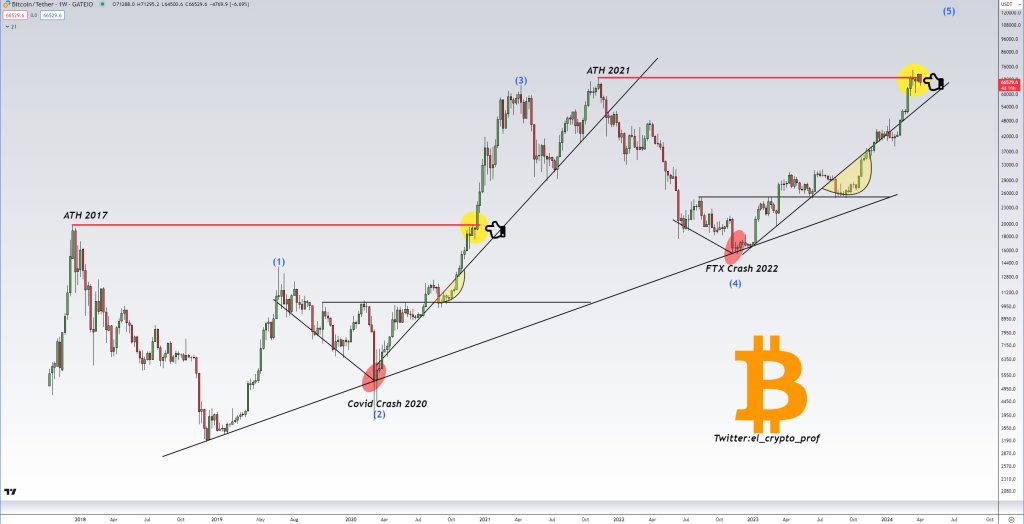
Based on this comparison, the trader is adamant that it may, reading from history, be the best time to “sell” at around spot levels. Still, for now, buyers can consider doubling down until there is a clear trend definition and shake-off of the current bear formation. Currently, BTC has strong rejections in the $71,700 to $72,000 liquidation zone, marking last week’s highs.
Watch Out For The “Dry Powder”
Besides technical candlestick formation, another trader thinks buyers better HODL even with sellers in control.
In a post on X, the analyst said Tether Holdings, the issuer of USDT, and Circle, the issuer of USDC, recently minted billions. On April 2, Tether issued 1 billion USDT on Tron, while Circle issued 250 million USDC on Solana.
This development, the analyst said, means there is “plenty of dry powder.” Stablecoins like USDT and USDC offer stability in the crypto markets, providing a refuge for crypto holders whenever prices tumble.
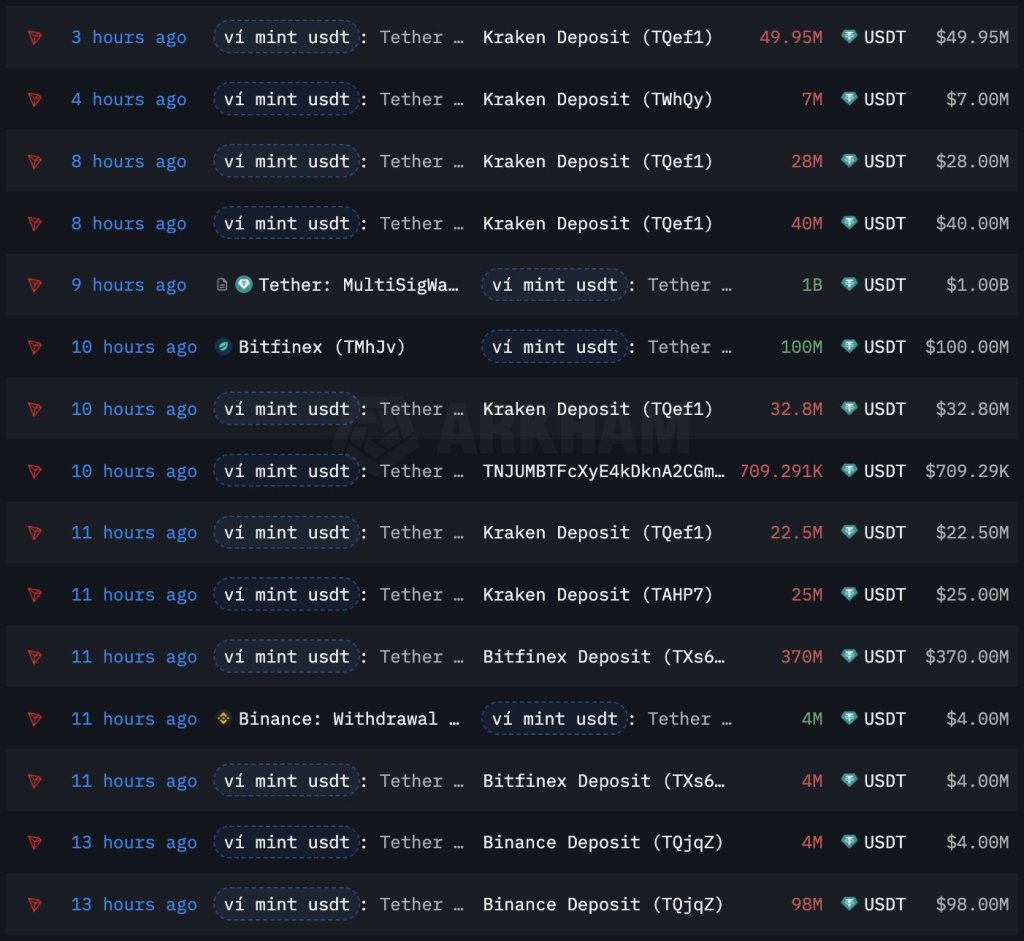
However, they can also act as conduits of liquidity from the traditional market, providing an avenue for interested users to get exposure to top coins or even engage in activities such as decentralized finance (DeFi).
In the past, prices often edged higher when there were huge stablecoin mints.
Stablecoin Expansion Continues as Bitcoin Rally Appears to Stall
The unabated expansion of stablecoin supply shows capital continues to flow into the crypto market, one observer noted.
Bitwise CEO Predicts $11 Billion Drop In Bitcoin Supply Post Halving
Over the last week, Bitcoin (BTC) investors enjoyed much profit as the crypto asset gained 9.34% to trade above $71,000 based on data from CoinMarketCap. Currently, most of the BTC market is highly expectant of the potential large price gains that the current bull cycle could present.
However, commenting on the immediate future, Bitwise CEO Hunter Horsley has stated that the upcoming halving event – a key part of the bull cycle – could be the most significant in Bitcoin’s trading history as a result of an impending massive decline in the token’s supply.
Bitcoin Price To Impact Supply Reduction And Token Demand – Bitwise CEO
In a post on X on March 29, Hunter Horsley shared that the Bitcoin Halving event slated for April 2024 could have the most profound supply and demand effects recorded ever in the asset’s history. For context, Bitcoin halving is a phenomenon that occurs every four years in which the block reward for BTC miners is reduced by half.
The April 2024 Bitcoin halving may be the most impactful we’ve seen. Why?
The last Bitcoin halving, 2020, Bitcoin was at ~$9,000. So the supply reduction in $ terms was ~$9M a day, and ~$3B a year.
This halving with Bitcoin ~$70,000, it will be >3x greater in $ terms: ~$32M a…
— Hunter Horsley (@HHorsley) March 29, 2024
Horsley began his prediction by referencing the last Halving in 2020, during which BTC’s price was ~$9,000. The Bitwise CEO stated that Bitcoin experienced a significant decline in token supply following the Halving effect, to the tune of ~$9 million per day and ~ $3 billion per year.
Considering that Bitcoin’s price currently hovers around $70,000, Horsley believes that the expected supply reduction will likely be at least three times larger in dollars and is estimated to be $32 million per day and $11 billion.
With a higher Bitcoin price, Horsley predicts that the expected massive decline in Bitcoin’s supply will be accompanied by a greater decrease in natural selling pressure by miners. In addition, the Bitwise CEO notes this development will concise with the current rise in institutional demand.
Generally, all factors highlighted by Hunter Horsley indicate that Bitcoin will likely experience a magnanimous price surge following the Halving event. Earlier in February, the Bitwise boss predicted BTC could attain $250,000 sooner as a result of investor demand driven by the introduction of the Bitcoin spot ETF.
BTC Price Overview
At the time of writing, BTC is exchanging hands at $70,000 with a 0.65% loss on the last day. The widely acclaimed “digital gold” is up now by 10.45% on its monthly chart following the price correction in February,
Meanwhile, the BTC’s trading volume has declined by 23.16% and is valued at $24.67 billion. With a market of $1.1 trillion, Bitcoin ranks as the largest cryptocurrency in the world.
BTC trading at $69960 on the hourly chart | Source: BTCUSDT chart on Tradingview.com
Featured image from Forbes, chart from Tradingview
Tether’s USDT Now Available on Celo
The USDT integration aims to boost cross-border payments and peer-to-peer transactions in developing regions.
Tether’s USDT Stablecoin Touches $100B Market Cap, Benefiting From Crypto Trading Frenzy
USDT, a stablecoin issued by Tether, hit the $100 billion market value for the first time in its history, according to CoinGecko data, as the rally on crypto markets expanded.
Wall Street Journal Accused of Defamation Over 2023 Tether-Bitfinex Article
Christopher Harborne and his aviation fuel broker AML Global were wrongly accused of “committing fraud, laundering money, and financing terrorists,” according to the lawsuit.
Diversifying Stability: Stablecoins Finding Home Beyond the Greenback
Following the success of Tether and USDC, a generation of stablecoins are offering new features for investors and holders, says Scott Sunshine, Managing Partner of Blue Dot Advisors.
Stablecoins Surge: USDT Leads $400 Million Inflows, Signaling Investor Confidence
The cryptocurrency industry has witnessed a significant change in the movement of stablecoins, offering valuable observations into the evolving dynamics of the market. Recent data from IntoTheBlock and CryptoQuant has shown a surge in stablecoin inflows into exchanges, reaching record highs in January.
Notable inflows were observed on January 2nd ($478 million), January 3rd ($489 million), and January 26th ($673 million). However, this trend has since reversed, with outflows dominating the market.
On January 30th, there was a substantial outflow of $412 million, marking the second-highest daily outflow recorded in the month, following the $541 million outflow on January 19th.
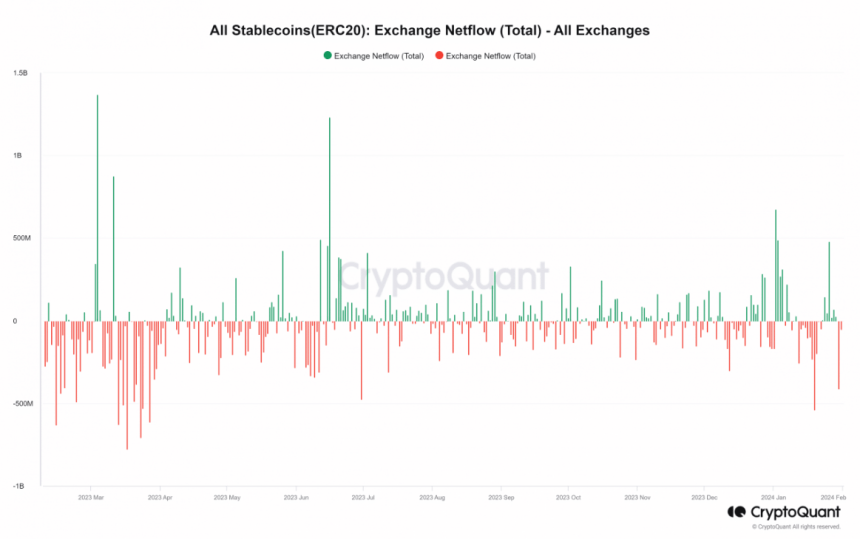
USDT Leads Stablecoin Rally, But Caution Persists In Crypto Market
An analysis of the 24-hour trading volume of the top stablecoins on CoinMarketCap reveals that Tether (USDT) and USD Coin (USDC) collectively accounted for approximately 90% of the total volume. Tether, in particular, has been dominant in terms of flows, with a 24-hour trading volume exceeding $42 billion, while USDC’s volume stood at around $6 billion.
Taking a closer look at the flow of USDT through CryptoQuant, it was found that there was a substantial inflow of $373 million on January 26th, followed by a prevailing trend of outflows, with over $83.4 million observed at the time of writing.
Experts suggest that the rise in stablecoin inflows onto exchanges, particularly the $478 million on January 2nd, could indicate traders’ and investors’ readiness to participate in the market or their desire to safeguard their funds during uncertain times.
Conversely, the shift towards outflows may signal caution or preparation for potential market volatility. Additionally, the substantial inflow of stablecoins, especially USDT, could indicate increased buying power and intentions to establish positions in the cryptocurrency space.
Stablecoins Surge, Signal Investor Preparation
The increase in stablecoin inflows onto exchanges can be interpreted in two ways. Firstly, it may indicate that investors and traders are preparing to enter the market. By moving their funds into stablecoins, they can quickly transition into other cryptocurrencies when they perceive favorable opportunities. This suggests a readiness to participate and take advantage of potential market movements.
Secondly, the rise in stablecoin inflows may also reflect a desire to keep funds in a secure manner, particularly during uncertain times. Stablecoins offer stability by being pegged to a specific asset, such as the US dollar, which can be appealing to investors seeking to protect their capital in times of market volatility. This cautious approach can be seen as a way to safeguard funds and mitigate risks in an unpredictable market.
Tether Records Nearly $3 Billion Profit
Meanwhile, Tether announced a “record-breaking” $2.85 billion in quarterly profits as the market capitalization of its main token, USDT, approached $100 billion.
According to a blog post by Tether, the interest gained on the company’s enormous holdings in US Treasury, reverse repo, and money market funds—which support the USDT stablecoin—account for around $1 billion of the earnings in the most recent quarterly attestation report that was released on Wednesday. Everything else was “mainly” due to the growth of Tether’s other assets, like gold and bitcoin (BTC), the stablecoin issuer said.
Featured image from Wccftech, chart from TradingView
Tether Reports Record $2.85B Profit as Biggest Stablecoin Nears $100B Market Cap
The USDT stablecoin issuer held over $5.4 billion in excess reserves as of 2023 year-end, according to its latest attestation.
Bitcoin Accumulation: USDT Issuer Tether Goes On Massive 8,888 BTC Buying Spree
In an encouraging development for the crypto space, Tether, the issuer of the world’s largest stablecoin USDT, has doubled down on its Bitcoin investment momentum by acquiring a staggering 8,888 BTC, further diversifying its portfolio.
Tether Increases Its Bitcoin Holdings
Tether has recently made its third largest Bitcoin purchase, as the stablecoin issuer added a total of 8,888 BTC valued at $380 million at the time of purchase. This brings its total BTC holdings to 66,465 BTC, valued at $2.81 billion with an average buy price of $42,353.
This transaction was captured by BitInfoCharts data, which also showed the previous amounts of BTC accumulated by the blockchain-enabled platform. This recent purchase follows Tether’s Bitcoin investment strategy, in line with its vision to continuously strengthen its reserves by accumulating Bitcoin.
Earlier in May 2023, the stablecoin issuer announced in a blog post that it would regularly allocate 15% of its net realized operating profits toward increasing its BTC reserves. As of the end of March 2023, Tether held approximately $1.5 billion worth of cryptocurrency, a $1.3 billion difference from its total BTC holdings presently.
According to reports from Dune Analytics, Tether has become the 11th largest Bitcoin holder, with Microstrategy, an American business intelligence service, surpassing Tether’s holdings with over 189,00 BTC accumulated. The other addresses in the top 10 rankings are owned by major crypto exchanges and governments, including Binance, Bitfinex and the US government.
Tether’s decision to double down on its Bitcoin investments signals its confidence in the cryptocurrency’s future trajectory. It also underscores the blockchain platform’s belief in the long-term potential of BTC as it aims to capitalize on Bitcoin’s potential growth by bolstering and diversifying its digital asset reserve.
BTC Accumulation Race Amidst ETF Hype
Tether’s strategic Bitcoin purchase comes at a time when the crypto market is buzzing with excitement over Spot Bitcoin ETFs. Before the approval of Spot Bitcoin ETFs, Tether had steadily increased its BTC portfolio, purchasing substantial quantities of BTC consistently. In March 2023, the stablecoin issuer bought 15,915 BTC and another 4,083 BTC between the months of May and September.
The timing of Tether’s BTC purchase suggests a proactive stance towards potentially seizing the opportunities brought forth by the Spot Bitcoin ETF market and the upcoming Bitcoin halving in April.
In addition to Tether’s large-scale BTC acquisition, Microstrategy is also another major player which has been continually increasing its BTC holdings. The business intelligence software company added a whopping 14,620 BTC to its portfolio in December 2023. At the time, the value of the purchase was about $615.7 million.
Other companies with large BTC holdings include Galaxy Digital and Elon Musk’s Tesla, as well as space exploration company SpaceX.
Tether Reportedly Bought 8.9K Bitcoin for $380M, Remaining 11th-Largest BTC Holder
The stablecoin issuer announced in May 2023 that it would start buying bitcoin in an effort to diversify the backing of its USDT stablecoin.
Does Howard Lutnick Know ‘the Truth’ About Tether?
Speaking at Davos, the Cantor Fitzgerald CEO says the stablecoin issuer has the money to back USDT. Maybe it’s time we all started to believe in Tether, despite the “truthers”?
Big Wall Street CEO Addresses Controversy Around Tether’s Stablecoin Assets: ‘They Have the Money’
Cantor Fitzgerald CEO Howard Lutnick vouched for stablecoin issuer Tether’s legitimacy on Tuesday, addressing what has been one of the big questions in crypto over the years as its stablecoin, USDT, has grown into a behemoth: Does Tether have the money it says it does.
Tether Hits Back at UN Report Alleging Role of USDT in Illicit Activity in East Asia
Tether, the issuer of the largest stablecoin by market cap, has challenged the United Nations (UN) for its report on underground banking and money laundering infrastructure in East and Southeast Asia.
Stablecoin Takeover? Record Tether 71% Dominance Raises Questions About Crypto Future
Tether, the issuer of the ubiquitous USDT stablecoin, cemented its dominance in 2023, ballooning its market share to a staggering 71%. This explosive growth, however, comes with a chilling undercurrent: a United Nations report linking USDT to a surge in cybercrime and money laundering in Southeast Asia.
Glassnode data paints a stark picture of Tether’s ascent. Its market capitalization reached a record $95 billion in January 2024, fueled by a 40% increase in USDT supply over the past year. Meanwhile, competitors like Circle’s USDC saw their market share shrink, with USDT now commanding over 7 times the circulation of its nearest rival.
Tether Market Dominance Soars
Paolo Ardoino, Tether’s new CEO, has prioritized cooperation with U.S. law enforcement. The company boasts of freezing wallets linked to sanctions lists and recovering over $435 million in illicit funds.
However, the UN report casts a shadow on these efforts, detailing how USDT facilitates “sextortion,” “pig butchering” scams, and underground banking across Asia.
While Tether has proactively banned over 1,260 addresses linked to criminal activity, the sheer volume of illicit transactions raises concerns about the effectiveness of these measures.
Critics point to Tether’s opaque reserve backing as a breeding ground for misuse, calling for greater transparency to combat money laundering.
Tether’s Reign At Risk: Regulatory Challenges
The stablecoin market, once touted as a bridge between traditional finance and the crypto world, now faces a reckoning. Tether’s dominance is undeniable, but its association with criminal activity threatens to erode trust and trigger stricter regulations.
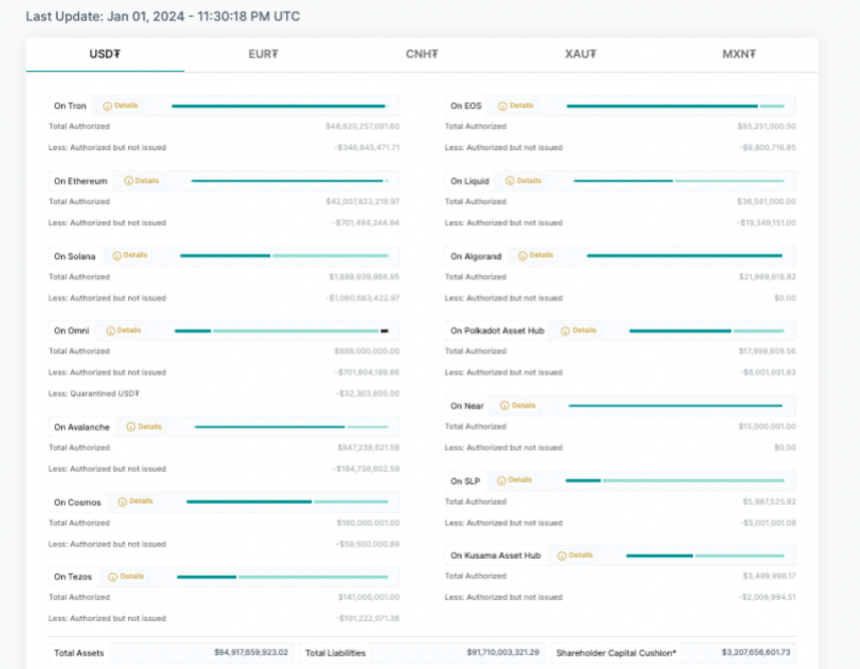
Meanwhile, Circle’s recent IPO filing hints at a potential shift in the landscape. With regulatory scrutiny intensifying, Tether’s future hinges on its ability to address concerns about transparency and combat illicit activity.
Can it clean up its act and maintain its crown, or will the tide turn towards its more transparent rivals? Only time will tell if Tether’s reign as the king of stablecoins will weather the storm of controversy.
With its historic 71% market share, Tether’s reign over the stablecoin realm is undeniable. Yet, the shadow of illicit activity threatens to eclipse its success.
As regulators sharpen their focus and competitors like Circle step into the ring, the question looms: will Tether clean house and retain its crown, or will this be the tipping point for a stablecoin revolution, reshaping the future of crypto itself?
Only time will tell if Tether’s dominance signals a bright new era for digital currencies or serves as a cautionary tale, paving the way for a more transparent and accountable crypto landscape. The gloves are off, and the fight for the future of stablecoins is just beginning.
Featured image from Shutterstock
USDC Stablecoin Momentarily Depegs to $0.74 on Binance
Circle’s USDC stablecoin spiked down to as low as $0.74 on three occasions today following a marketwide sell-off spurred by a report casting doubt over whether a spot bitcoin ETF will be approved this month.